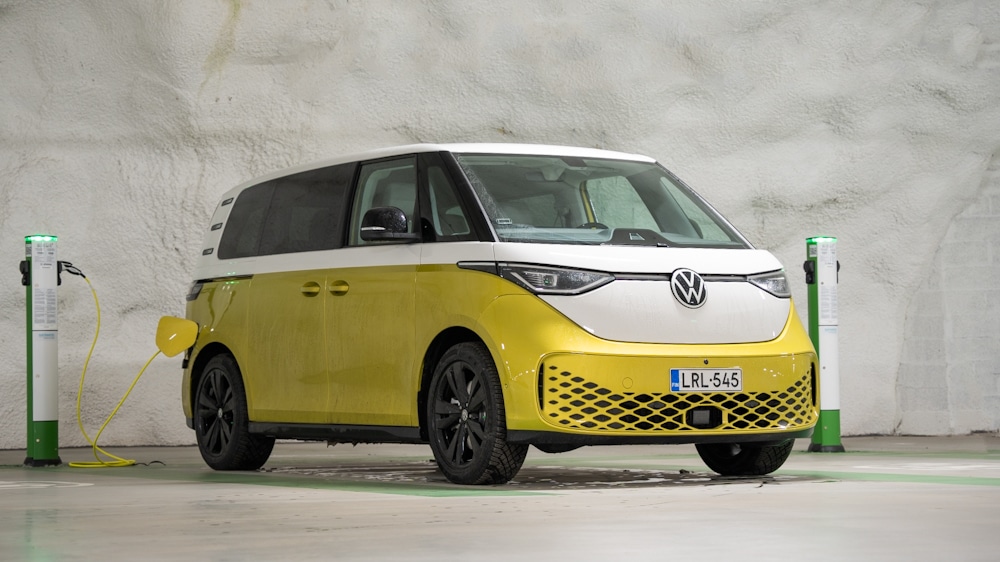The latest addition to Volkswagen’s electric ID. range, the ID. Buzz is, to put it mildly, a shot of energy for the winter drizzle and grey of southern Finland.
Not only does the car attract attention and thumbs up with its vivacious looks, but in many ways it is one of the most exciting all-electric innovations to hit the market in a while.
Volkswagen’s history in bus manufacturing goes way back to the 1950s, when the Volkswagen Type 2, which went by several nicknames including Combi, Splittie, Bulli and Microbus, was launched in the early 1950s.
The name ‘Hippibus’ was not invented out of thin air either, as the car was particularly popular among hippies and others in the United States in the 1950s. It was also not uncommon at the time for the car to be painted over with flashy patterns or for the VW logo on the front to be replaced by a peace symbol.
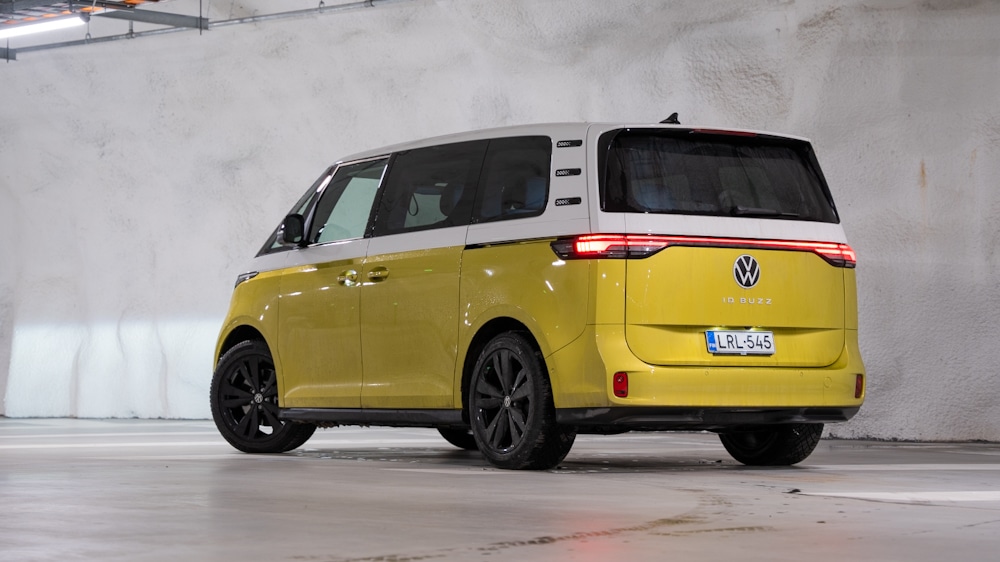
As a pioneer of its time, ID. Buzz is again something new and bold, something that the automotive world has been longing for. The sympathetic and cute design can’t fail to catch people’s attention, and you get used to the flashes of mobile phone cameras behind the wheel of the Buzz.
The exterior design of the front of the car makes the viewer smile back with the same smile that the front of the car gives with its wide grin and fan-eye shaped headlights. In the side profile, dark glossy plastic parts in the window frames dazzle the eye so that the roof appears to be floating.
In the side profile, the eye is also drawn to the three ‘wake lines’ behind the rear windows, which probably symbolise the air-cooling vents in the engine of the first Volkswagen bus.
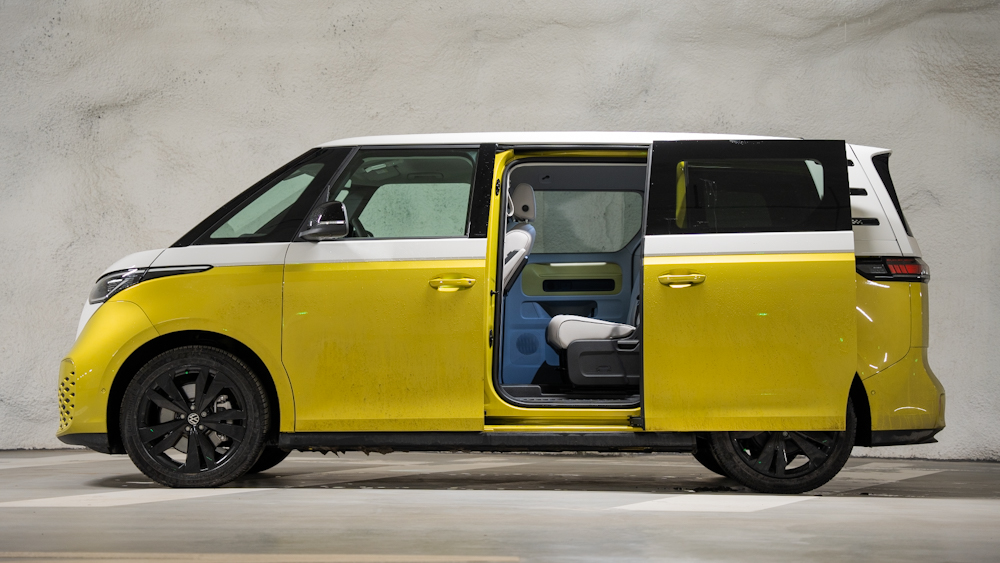
The cubic design of the rear end gives a hint of the large loading opening and the rear of the car is indeed a more traditional and understated Volkswagen in design. The tail lights extend from side to side and the Volkswagen logo and model designation are emblazoned in the centre of the boot.
For the first ID. Buzz Launch Edition models, the two-tone paintwork, which can be found on the test car, comes as standard equipment, but for future models, the two-tone paintwork will cost a hefty €2,900. There’s no arguing that the dual paintwork doesn’t look good.
A family or dog lover’s dream?
A closer look at the car’s dimensions reveals that the Buzz is shorter than, say, the estate Passat. Instead, the wheelbase is no less than 20 centimetres longer than the Passat, creating a good starting point for spacious interior space and a stable ride.
The cabin and interior are spacious and there’s plenty of breathable air. The high seating position could be compared to many SUV models, but the Buzz feels like it has a lot more space and outward visibility than most SUVs.
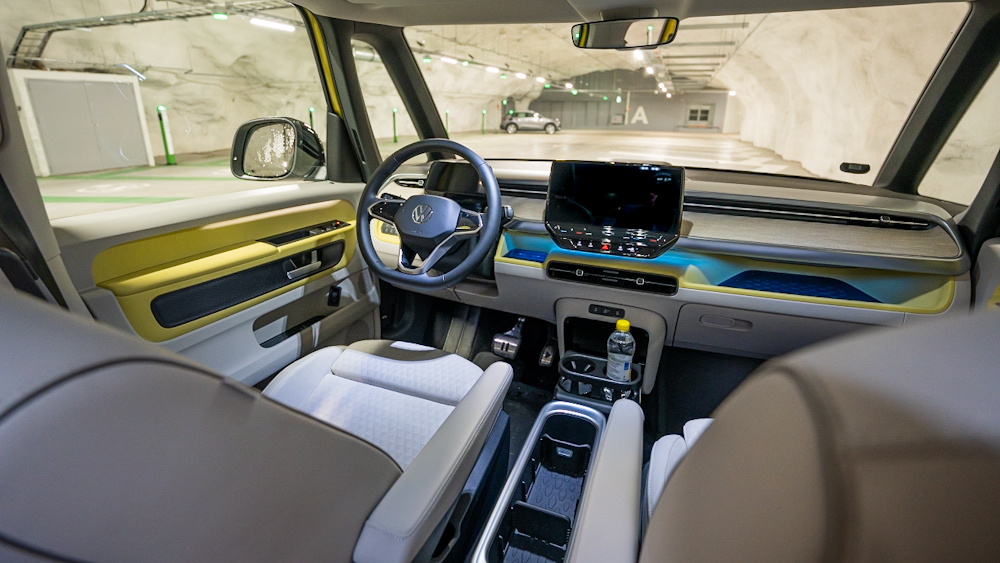
In the driver’s seat, there’s a distinctly van-like feel to the visibility and space, where, in addition to good visibility, you feel like you’re sitting well above the rest.
There’s plenty of room for a family with children and hobbies. The rear seats have room in all directions for the largest members of the family, the front seat backrests open up to a table familiar from aeroplanes and you can put your phone or small pedal above the table in the front seat’s top pocket. Several usb-c charging sockets are dotted front and rear.
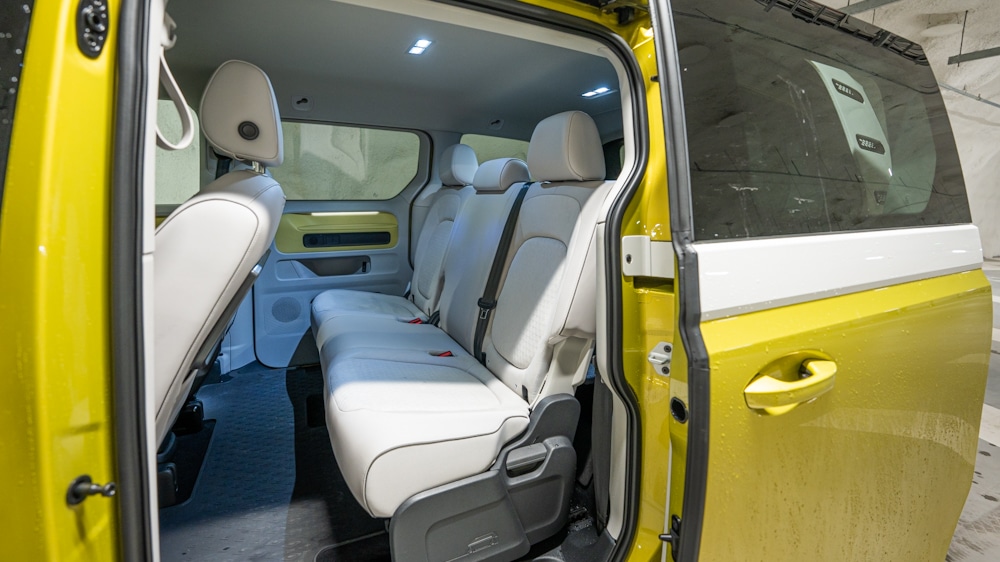
The rear seats can be accessed from both sides of the car. The electrically operated rear doors can be opened and closed from the front dashboard and rear seats.
The boot is about twice the size of an average passenger car, with a total capacity of 1,121 litres. Without the removable floorboard in the test car, even a smaller dog can easily jump in thanks to the 63 cm loading height.
The floor of the test car, on the other hand, allows you to sleep in the car or carry larger items, as the rear seats can be folded down to make the floor completely flat.
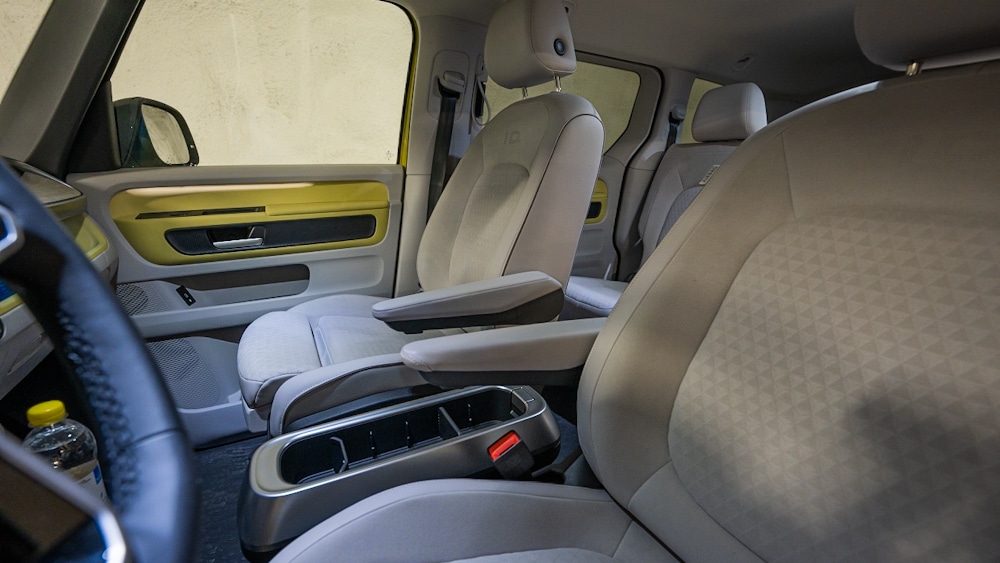
The boot hatch and loading opening is almost square, and the shape of the boot cube is not far off. The loading hatch is one metre high and the width of the boot is 1.2 metres.
In the cargo version of the car, the ID. Buzz Cargo, the load opening remains virtually unchanged, but the depth of the boot increases the volume to as much as 3 900 litres.
Rear-wheel drive, van and winter weather
When it comes to drivability, the Buzz has a very confusing exterior, and prejudices can be strong for the uninitiated. Like other Volkswagen ID. models, the ID. Buzz is built on an MEB chassis, so it is rear-wheel drive and has a 77 kWh (net) battery.
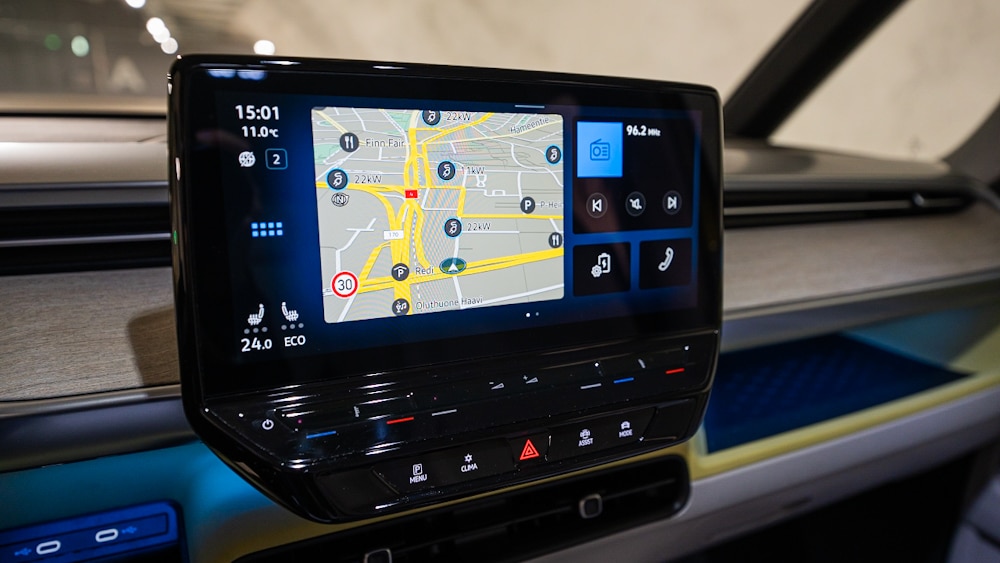
The high centre of gravity and large size set strong preconceptions about drivability, but even lower preconceptions turn positive once you get going. In short, the ride is stable and the electric motor makes progress smooth to say the least.
The view from the cabin is, as mentioned, van-like, but the overall driving experience is very comfortable and effortless. The weather conditions in the test gave the best of what the winter slush of southern Finland has to offer.
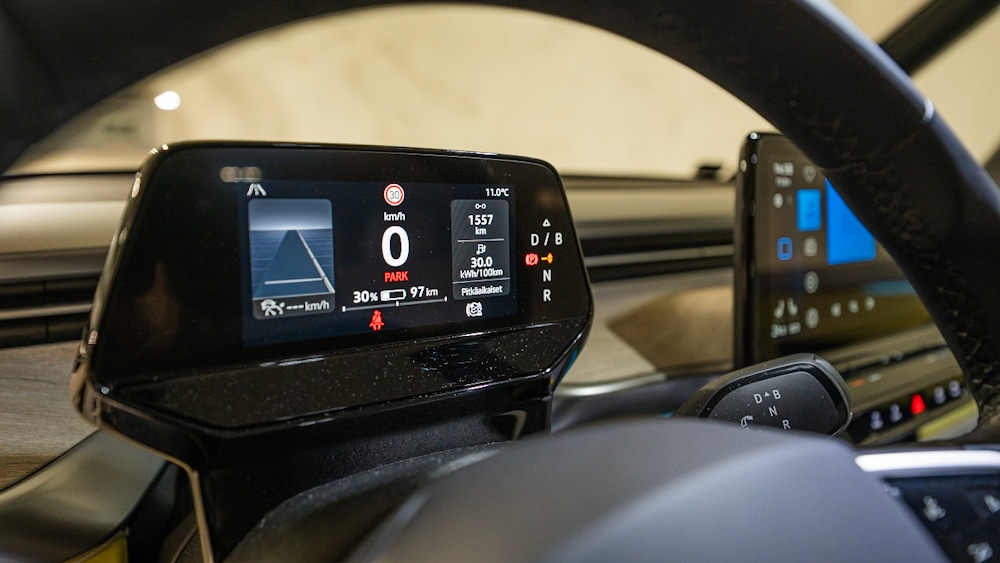
The electric power train also works effortlessly on the Buzz, and the rear-wheel drive is hardly noticeable in normal driving. Thanks to the small turning radius and seat height made possible by rear-wheel drive, the Buzz feels like a much more agile vehicle than its size.
The stability of the ride is also greatly influenced by the kerb weight of around 2,400 kg and the long wheelbase, which you can notice when the tyres are quite close to the bumpers.
A slight surface roughness is noticeable in the chassis under certain driving conditions, but it even contributes in a positive way to a distant resemblance to a traditional ‘van, and distinguishes the Buzz’s driveability from that of conventional cars and SUVs.
We could do with a bigger battery and a faster charging speed, couldn’t we?
Electric range and charging speeds are always hot topics, especially in winter, when the need would be to get to Lapland without charging and without stopping for a single seat.
The ID. Buzz’s drive battery is by no means the largest and the operating distance is not helped by the fact that there is much more heated air inside than in a small passenger car.
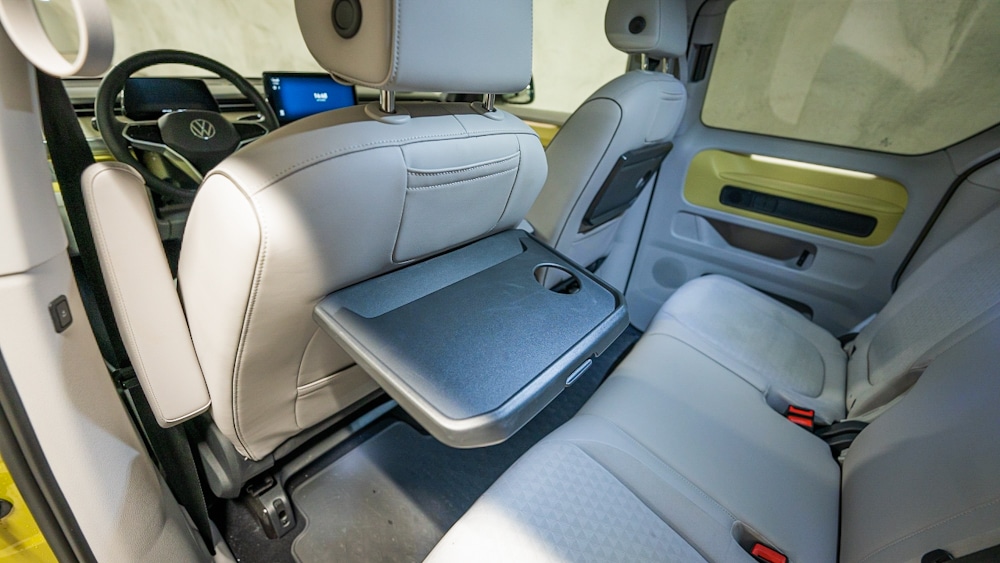
Constantly cold-starting and driving short distances will drain the Buzz’s battery in well under 200 km.
Preheating of the interior from an external power supply, which is also recommended by the importer, reduces the power consumption in winter conditions, but this was not possible during the test drive.
With cold starts and mixed driving, consumption was in the range of 25-35 kWh/100 km.
On the road at 100 km/h and in a few degrees of frost, consumption was around 28 kWh/100 km. This puts the operating range at around 275 km on a full battery.
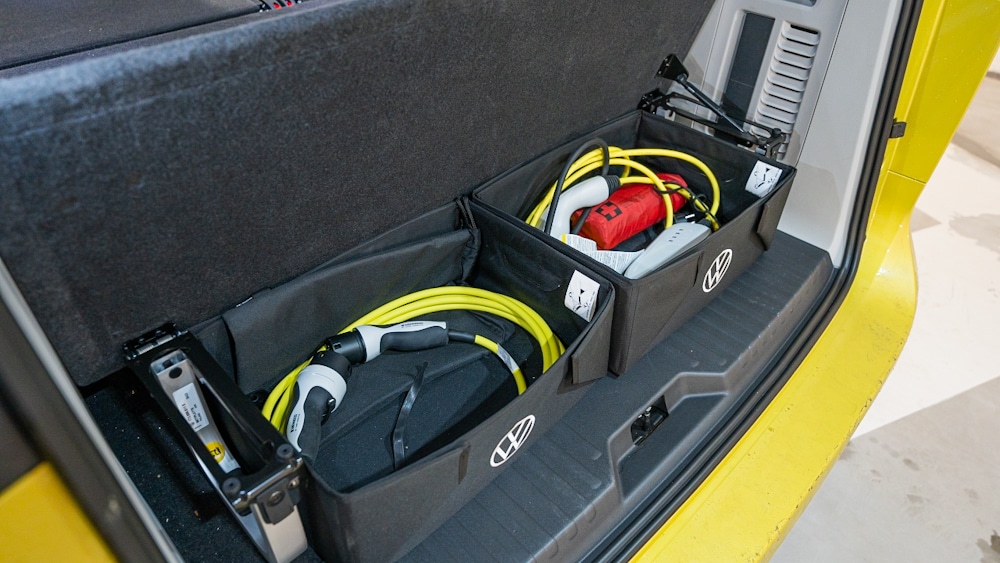
In the future, the new models will be equipped with an air-source heat pump, which was not present in the test car and is likely to contribute to a slight reduction in overall electricity consumption.
For those who drive further and use fast chargers, the bigger problem will be charging power rather than range.
Charging performance hasn’t been a head-scratcher in MEB-based cars in the past, and the Buzz was no exception. The maximum power that could be extracted from the fast charger during the test drive was 70 kW with about 30% battery charge.

Winter temperatures affect the charging speed, but it still falls far short of the 170 kW (battery charge less than 30%) claimed by the manufacturer.
A brand gimmick or a real sales success?
The ID. Buzz is a special car in many ways and will certainly appeal to certain types of users with their own needs. One could well imagine that the standard 5-seater model will appeal to many families with children, while the ID. Buzz Cargo package model will be used by companies.
Both groups of users are united by their daily routines and the same everyday use of the car from day to day, where unexpected longer journeys are not a constant occurrence, making mileage and charging capacity a secondary consideration.
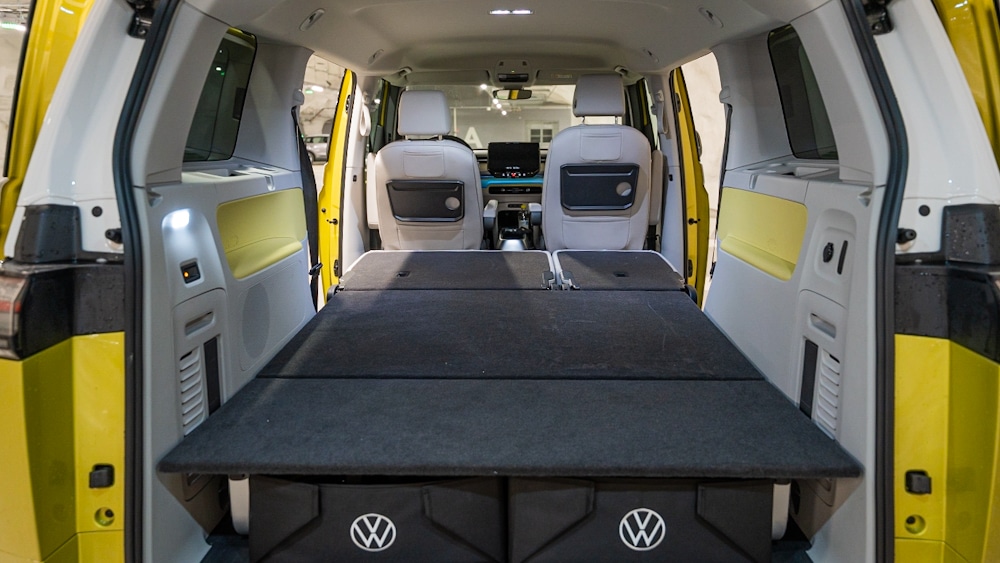
In the case of the Buzz, the revival of the soul of the old cult car has been perfectly successful.
Volkswagen is certainly and justifiably proud of the car’s design and the positive attention it attracts.
With the ID. Buzz, Volkswagen has succeeded in bringing the trendiness of electric motoring to family and van driving. So while we wait for the ID. Buzz seven-seater and possible touring model..
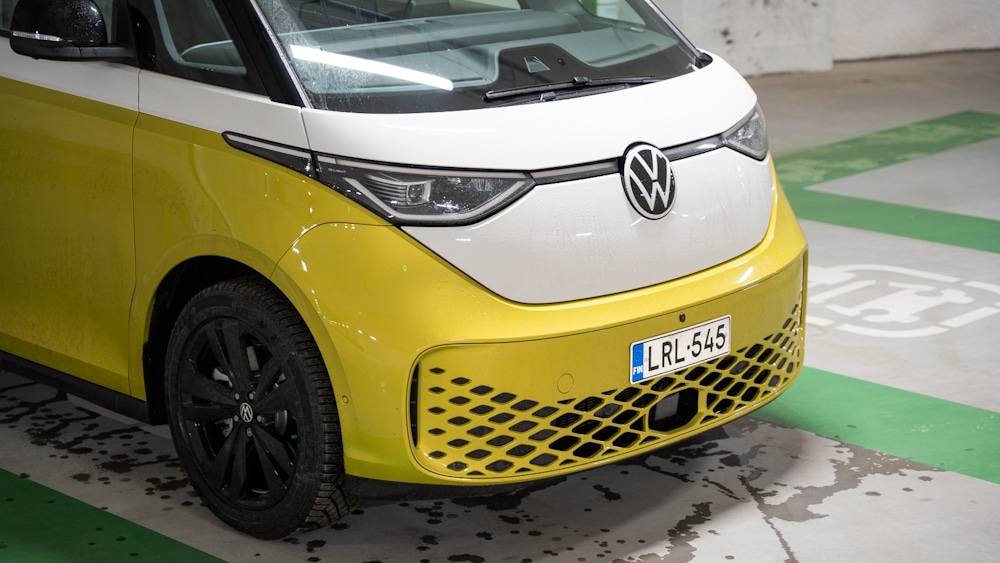
Volkswagen ID. Buzz 150 kW “Launch Edition” 77kWh
- Electric motor power: 150 kW.
- Electric motor torque: 310 Nm.
- Acceleration: 10.2 sec (0-100 km/h)
- Driving battery capacity (gross): 82 kWh.
- Driving battery capacity (net): 77 kWh.
- Manufacturer’s declared combined fuel consumption: 21.7 kWh/100km.
- Manufacturer’s declared range (combined): 424 km (WLTP)
- Consumption during test drive: 25-35 kWh/100km.
- Test-driven range on a single charge: 220-308 km.
- Maximum charging power (DC): 170 kW (battery charge less than 30%)
- Maximum charging power (AC): 11 kW.
- Cargo space: 1 121 l.
- Drive mode: rear-wheel drive
- Towing capacity: 1 000 kg.
- Starting price: 71 540 euro (Launch Edition)
- 67 250 euros (Pro Business)
